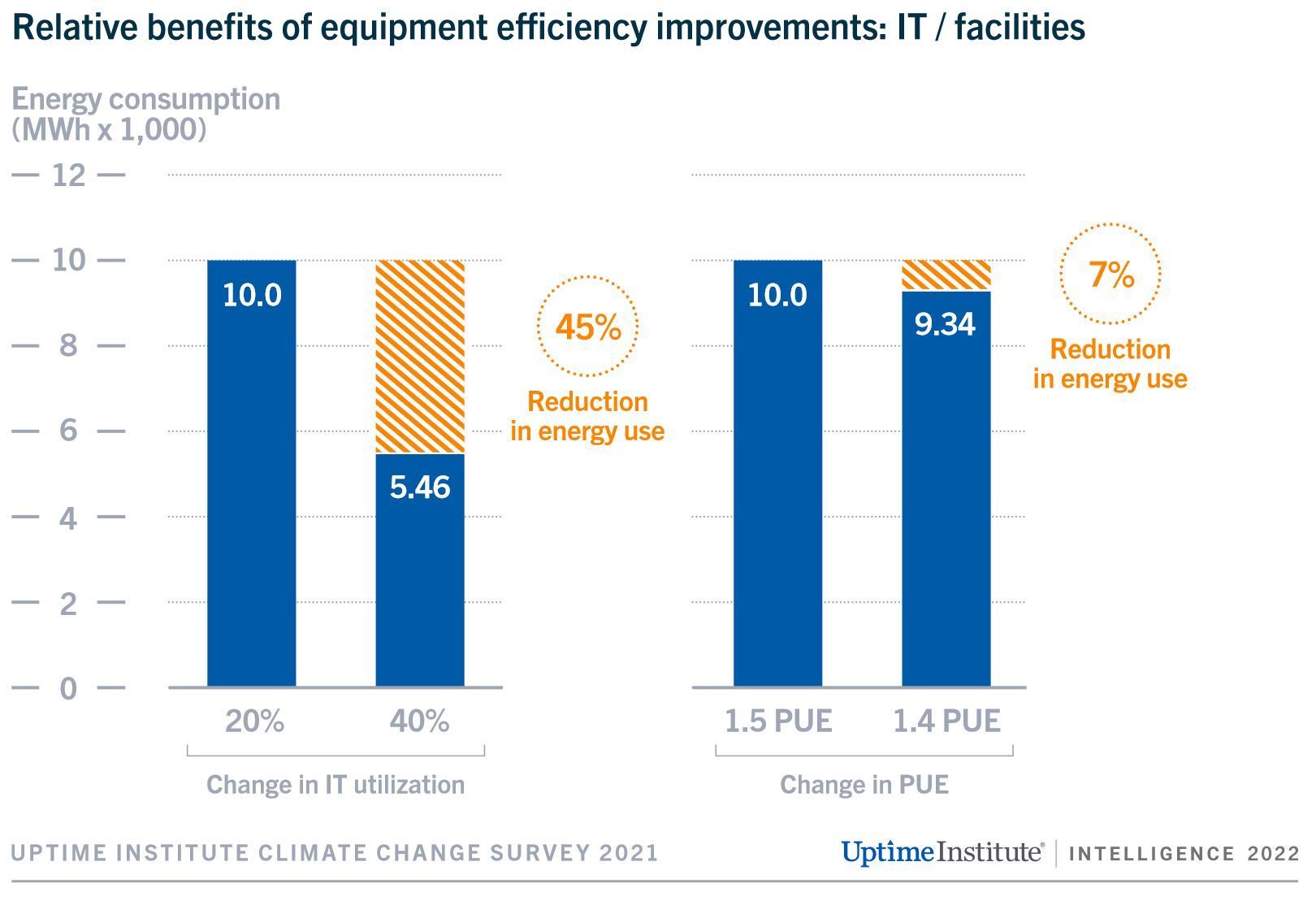Optimize Server Utilization for Energy Efficiency and Embodied Carbon
Servers are most efficient at high utilization rates because of Power Proportionality and Idle Power Consumption of Servers.
Every server has an embodied carbon footprint. If a server is under-utilized, it has a bigger footprint per work unit than a high-utilized server.
Overall Energy Reduction Potentials
Comparison between change in IT utilization and change in PUE

Intel Gold 6230 Xeon processor (The Green Grid database):
- 40% utilization: 286 watts (W)
- 20% utilization: 267 W
- → Reduction: 45%
Source: Dietrich, J., & Lawrence, A. (2022). Reducing the energy footprint (Digital Infrastructure Sustainability – a Manager’s Guide, p. 8). Uptime Institute.
→ Better server utilization is often much more important than increasing the PUE.
Goal
What capacity utilization should be aimed for in order to achieve the highest possible energy efficiency and to be able to handle peak loads well?
Dropbox
Strategies
What strategies exist to achieve a high server utilization?
Shutdown Zombie Servers
→ Zombie servers reserve resources that are not used, that lead to underutilization.
Right-sizing
See also: